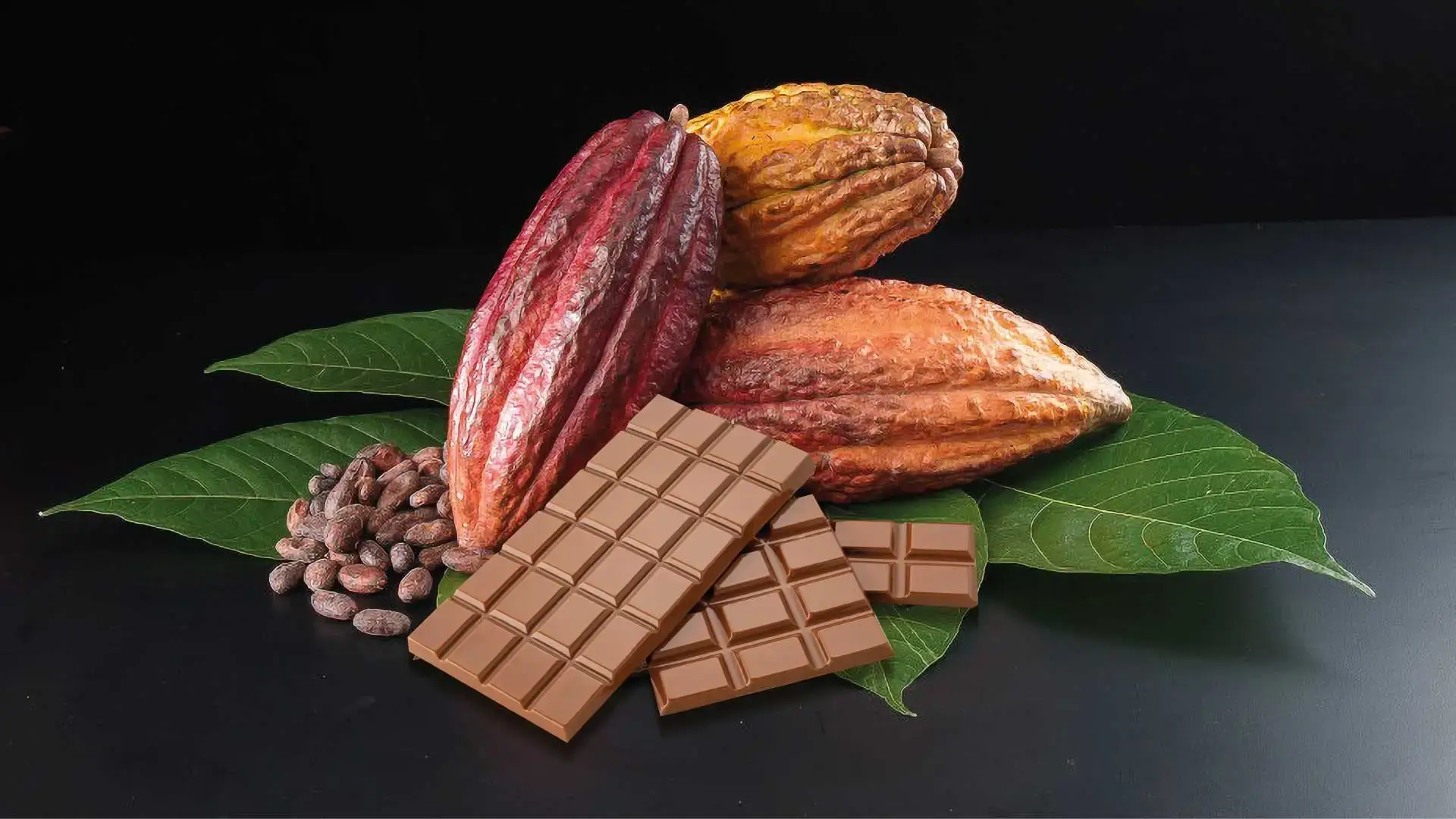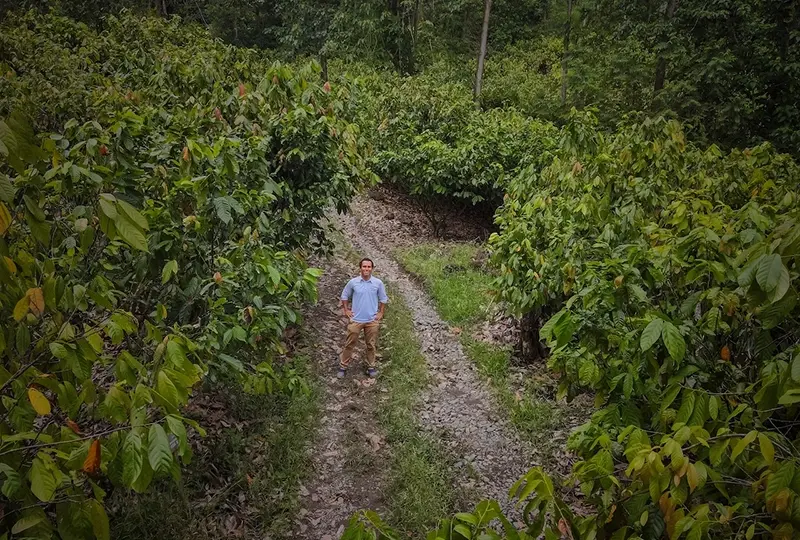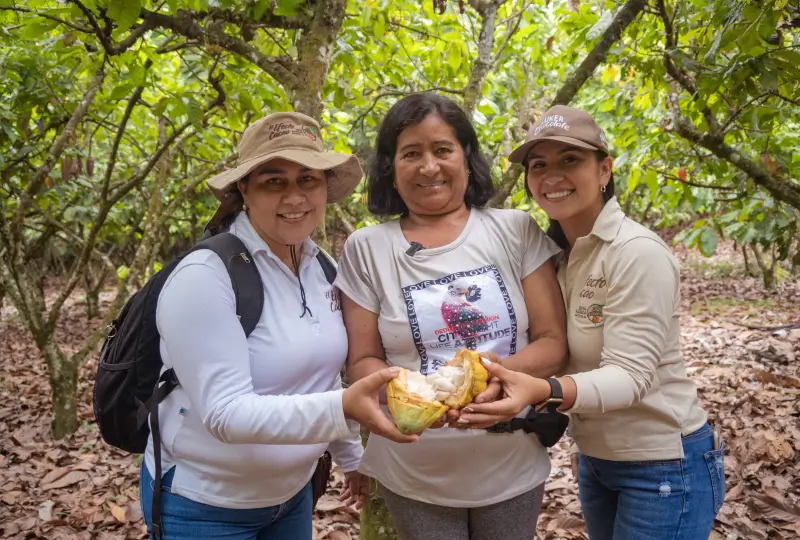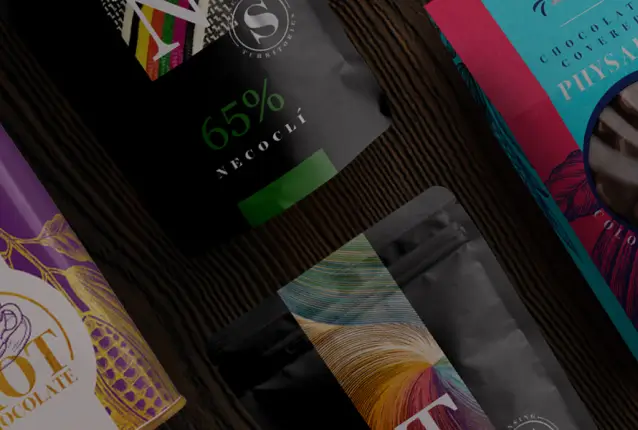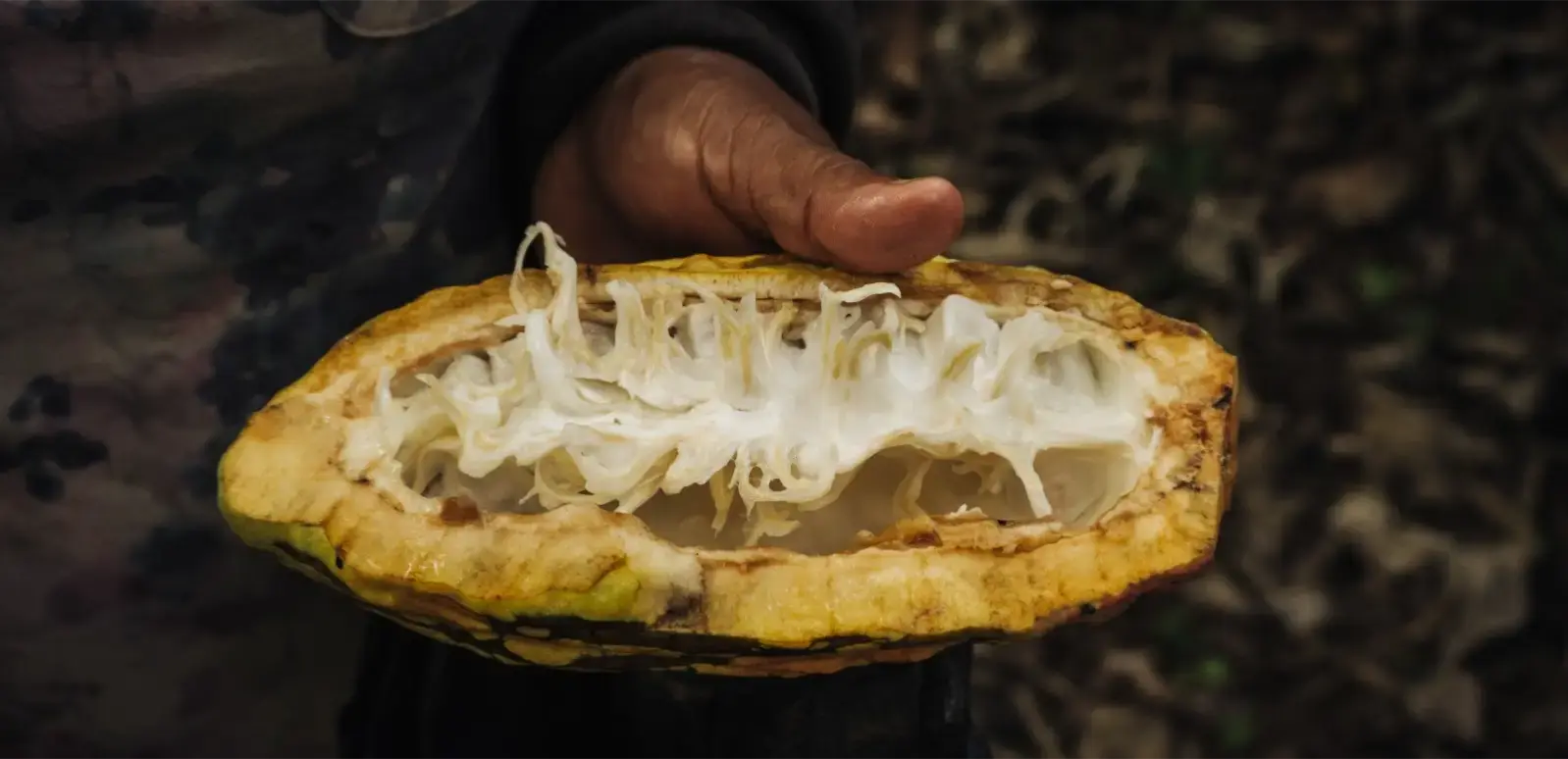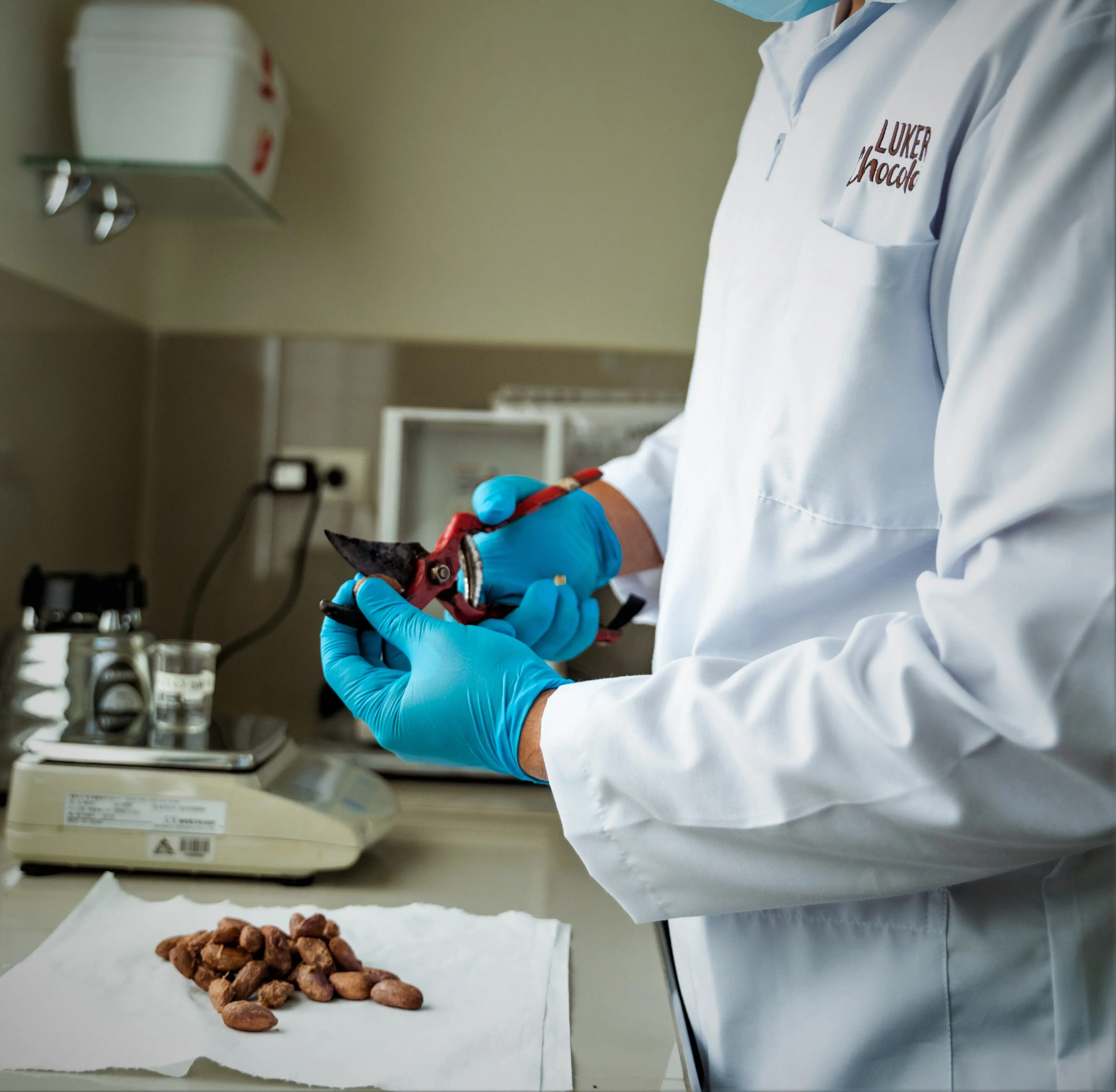By: Sandra Liliana Ostos - Director of Quality and Environmental Management.
In chocolate manufacturing, there is a crucial factor: quality control. Each bar or chocolate product that tastes delicious tells only half the story; the other half is written behind the scenes, in meticulous quality checks, rigorous standards, and an unwavering focus on consumer safety.
>Click here to contact our team<
By adhering to top-notch quality standards and obtaining key certifications like FSSC 22000, managing allergens, and ensuring rigorous laboratory practices, brands can ensure product excellence and build significant consumer trust.
During my years at the plant and the operations, I picked up a few insights about market certifications and concerns. Keep on reading as we share with you what we've learned on our quest for chocolate excellence through rigorous quality control processes.
Let’s begin defining…
What is quality testing for chocolate manufacturing?
To ensure that products meet the highest quality and safety standards with a systemic approach based on processes and a continuous improvement cycle, quality testing for turnkey chocolate manufacturing encompasses a broad spectrum of analyses and assessments to ensure that the final product is safe for consumption, consistent in taste and texture, and adheres to established industry and company standards.
The delightful world of chocolate relies on meticulous quality control at every production stage. From bars to truffles, maintaining customer satisfaction and upholding brand reputation hinges on rigorous quality processes.
Common quality issues in chocolate manufacturing.

Some of the major challenges or issues in quality control for chocolate manufacturing include:
- Cocoa Bean Quality: The excellence of the final product depends on the quality of the cocoa bean, which is influenced by factors such as variety, soil, climate, and harvesting conditions. Pest infestation, improper fermentation, or poor drying can result in inferior beans, affecting taste and texture.
- Contamination Risks: Chocolate production faces bacterial, fungal, and physical contaminants. Cocoa beans may carry mycotoxins or heavy metals from the soil, harming health. Stones, dust, and metal fragments can enter during harvesting, transportation, or processing.
- Process Control: Each stage of production needs to be carefully controlled. Precision in roasting, refining, conching, and tempering is vital. Variations in parameters impact the final chocolate's taste, texture, and appearance.
Some of the criteria analyzed in the process control may include:
A. Physical and Sensory Analysis
B. Chemical Analysis
C.Microbiological Testing
D. Allergen Testing
E. Shelf Life Testing
F. Ingredient Authentication
G. Tempering Quality
- Packaging: Chocolate is sensitive to temperature and humidity changes. Improper package conditions can cause fat or sugar bloom, affecting chocolate's appearance and quality.
- Regulatory Compliance: Chocolate makers adhere to food safety regulations, hygiene, and labeling. Non-compliance risks fines, recalls, and reputation damage.
What are key certifications that ensure safety in chocolate manufacturing?
Certifications are a cornerstone of trust in the chocolate industry, providing assurance of quality and compliance with global safety standards. For brands aiming to expand into international markets, obtaining and maintaining these certifications is non-negotiable.
1. FSSC 22000: The latest version of FSSC 22000 (Version 6), released in April 2023, includes strict requirements for labeling, allergen management, environmental monitoring, and more.These updates integrate the requirements of ISO 22003-1:2022, strengthen requirements to help organizations meet the UN Sustainable Development Goals (SDGs), and incorporate feedback from a development survey.
New Requirements in FSSC 22000 Version 6:
- Labeling: More stringent labeling requirements
- Food defense and fraud mitigation: Additional requirements for these areas
- Allergens: Enhanced allergen management protocols
- Environmental monitoring: More robust environmental monitoring protocols
- Food safety and quality culture: A mandatory Food Safety and Quality Culture Plan
- Quality control: Quality control now mirrors CCPs in food safety, with an emphasis on active management and documentation
2. ONAC Accreditation: A Seal of Laboratory Excellence
ONAC accreditation demonstrates the conformity assessment results based on international standars, contributing to underpin the credibility of the quality and safety of goods and services available in the market.
✅ Our in-house laboratory is ONAC accredited in competence in key testing areas such as cadmium determination and salmonella detection. As of 21st November 2024, we became the first laboratory in Colombia to be accredited by ONAC for testing to determine Lactose protein content (lactose allergen). This accreditation ensures precise and reliable results, strengthening the credibility of our products.

Luker's laboratory team
3. BASC (Control and Security Management) to ISO 14001 (Environmental Management): Adherence to diverse certifications highlights a multifaceted commitment to quality, safety, and sustainability. These certifications ensure regulatory compliance and resonate with consumers seeking ethical and environmentally friendly chocolate.
Certifications are a visible marker of a brand’s dedication to quality and safety. They facilitate market access and provide a competitive advantage by instilling confidence in end consumers. Brands leveraging certifications in their communication often see a direct impact on loyalty and purchase decisions.
>Contact us for chocolate that meets the highest standards<
Managing allergens and heavy metals for consumer safety
Allergen control is a critical aspect of our food safety program. The FDA and EFSA recognize a range of allergens that must be carefully managed to prevent cross-contamination and ensure consumer safety.
At Luker Chocolate, we manage allergens like milk and soy through rigorous controls, including deep cleaning protocols and comprehensive allergen testing. Proper labeling, such as 'Dairy Free' and 'Soy Free' claims, ensures that consumers can make informed decisions and trust the safety of your products.
Luker's allergen management program includes:
- Design and cleaning of equipment
- Production planning
- Control of allergenic ingredients
- Controls during processing
- Management and handling of rework
- Personnel training
From inception, this approach involves pinpointing allergenic raw materials, meticulously handling their transport, storage, and every stage of the manufacturing process. Suppliers are requested to declare allergens within raw materials, with the onus on them to communicate any changes that could affect allergen presence. This ensures a proactive handling of allergen risks.
In addition to controlling allergens, we prioritize monitoring heavy metals like cadmium and lead in our products. These metals occur naturally in soil and plants and can become chocolate. However, we are committed to adhering to strict specifications.
Our laboratory employs atomic absorption spectroscopy to quantify cadmium and lead. A comprehensive sampling plan is enacted, from sourcing to production, ensuring meticulous adherence to specified cadmium levels. This plan includes monitoring at other production stages, such as milling, storage tanks, product formulations, and finished products.
>Click here to source high-quality chocolate ingredients<
How is the quality of chocolate products guaranteed during the production process?
- GMP compliance (hygienic habits of personnel, infrastructure, and machines)-Basic prerequisites. L&D, preventive maintenance, and training programs according to the activity.
- Production plan aligned with the complete supply of materials.
- The production process must comply with the manufacturing route defined for chocolate reference, which includes the recipe, flows, machine operating conditions, process and product specifications, and measurements of variables and attributes at critical stages.
- Operators in charge of the monitoring process and product variables, quality checks in the process (recorded in the batch record), and, at the end, make a final validation of the counter sample.
Quality in Chocolate Production Begins at Origin:
From the moment the cocoa bean is harvested until the final product goes to market, each stage of the chocolate production process is carefully monitored and subjected to strict quality controls.
“Maximizing quality in the cocoa value chain requires seamless integration and transparent relationships among growers, providers, and employees. Coordinating all process steps from planting to packaging fosters better quality control, sharing of best practices, and innovative feedback.”
-Sandra Ostos, Director of Quality and Environmental Management
According to Sandra, at the factory, various preliminaries involve compliance with good practices such as staff competence, hygienic habits, adequate infrastructure and equipment.
In addition, materials for production are planned and delivered, following protocols set out in the manufacturing routes. These routes establish detailed step-by-step operations, product recipes, and all necessary specifications, ensuring our products meet the highest standards.
A commitment to sensory profile harmony:
The art of sensory profiling is a meticulous endeavour. Our seasoned sensory professionals and trained panellists embark on a sensory journey grounded in theoretical and practical expertise. Through calibrated palates, our panellists master identifying basic flavours, detecting defects, and ensuring harmonized monthly assessments for consistency – a process aptly known as panellist calibration.
Our rigorous approach is underpinned by an interplay between skilled panelists and calibrated equipment, including internal teams and even those from our plant. From cacao liquor profiles to identifying nuances and residues, our panellists' discerning reports guide strategic decisions.
Luker Chocolate's pathogen monitoring program focuses on identifying, preventing, and controlling the insidious risks of pathogenic microorganisms. This ensures zero tolerance for cross-contamination from Salmonella, which has been identified as the primary pathogen associated with cocoa and its derivatives.
This approach spans four distinct zones within our facility, from direct-contact sites to areas removed from manufacturing processing, and serves as a robust initial defense. Our vigilant quality department holds products until microbiological results align with compliance standards, ensuring a secure release. If necessary, recall procedures are promptly activated.
By steadfastly adhering to these stringent sensory evaluation protocols, from panellist calibration to prototype analysis, we achieve a harmonious sensory profile and maintain it across our entire range. This dedication to consistency encapsulates our mission to provide an experience that delights the senses with every indulgent bite.
How does the Luker Laboratory work?
Among the most important certifications is the FSSC 22000 (Food Safety System Certification), which ensures food safety throughout production.
We also have the BASC Control and Security Management certification, which ensures the promotion of safe trade in cooperation with governments and international organizations; the AEO certification (Authorised Economic Operator before the DIAN) for the export process; and the ISO 14001 certification in Environmental Management.
At the beginning of 2023, we obtained the accreditation NTC-ISO/IEC 17025:2017 for the Determination of Cadmium content and the Detection of Salmonella SPP in Cocoa and Chocolate products by ONAC (National Accreditation Organisation of Colombia). As of 21st November 2024, we became the first laboratory in Colombia to be accredited by ONAC for testing to determine Lactose protein content (lactose allergen). This accreditation demonstrates that our products meet international markets' quality and safety expectations.
Strategic Steps for Chocolate Brands to Ensure Safety and Build Trust
To navigate the complexities of chocolate production and meet consumer expectations, implement these prioritised strategies:
-
Audit and Strengthen Supply Chains
Regularly evaluate supplier practices to address risks like heavy metal contamination and allergen cross-contact. Prioritise sourcing from responsible producers who adhere to sustainable and safe agricultural standards. -
Collaborate with Certified Manufacturers
Partner with manufacturers that meet globally recognised safety benchmarks, such as FSSC 22000. These collaborations ensure product compliance, market access, and consistent quality. -
Communicate Clearly with Consumers
Use transparent labelling and highlight certifications on your packaging to build consumer trust. Clear communication about your safety standards reflects a strong commitment to quality. -
Leverage Advanced Testing Data
Apply insights from thorough testing protocols to refine your product formulations, ensuring compliance with regulatory standards while meeting shifting consumer preferences. -
Promote Safety as a Differentiator
Showcase your certifications and safety measures in marketing and communication campaigns. This not only educates your audience but also positions your brand as a leader in quality and trustworthiness.
Safety and security at every stage of production
Quality control services are essential for chocolate businesses, whether they produce or manufacture products for others. This validation is crucial to maintaining consumer trust and proves the product's quality.
Chocolate production is exposed to various physical, chemical, and microbiological hazards that must be controlled and monitored. Among the main ones is product contamination by heavy metals, pesticides, bacteria, and mycotoxins.
Addressing these risks, the chocolate industry strives to ensure quality and consumer safety by implementing preventive and mitigation measures in its processes through a Quality Management System with clear guidelines and principles to manage and improve the quality of products within each company.
An in-house laboratory to guarantee the results' competence, confidentiality, and reliability. In addition, control plans, including aptitude tests, are carried out with international laboratories to support the results' reliability.
"Taking into account the technical data sheets, we carry out attribute analyses, i.e., those physical characteristics of both the product and the packaging. We carry out routine studies related to physical-chemical tests, analysis of fats, granulometry, viscosities, and special analyses according to need. All batches have a sensory analysis that certifies that they are homologated and comply with a specific profile. This way, we finally have all the necessary elements to bring them to the market" explains Sandra Ostos, our Director of Quality and Environmental Management.
Ensuring the quality of chocolate is a multi-faceted endeavor, considering both physical aspects and flavour profiles. For instance, during the physical evaluation of the beans, moisture is checked, cutting tests are carried out, and both external and internal mold is detected.
It should be noted that quality control allows the identification and correction of any deviations or problems in the whole production process, avoiding the distribution of defective or inconsistent products, which could damage the company's reputation. This also strengthens the relationship between the consumer and the brand.
At Luker, our commitment to excellence ensures top-quality chocolate at every stage. With rigorous testing, strict certifications, and meticulous allergen management, we guarantee safety and consistency.
REFERENCES:
https://www.cbi.eu/market-information/cocoa/buyer-requirements
